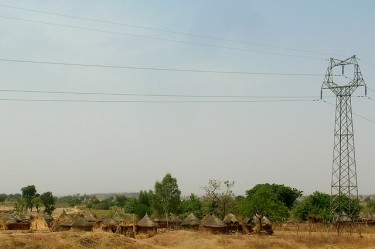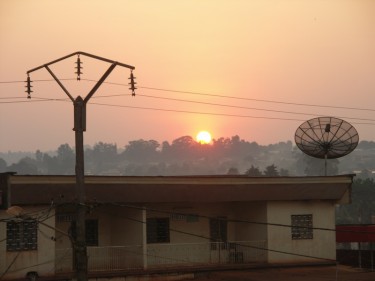This post is part of our International Relations & Security coverage.
After his reelection in November 2011, President Paul Biya of Cameroon announced [fr] that the country would soon become a giant “construction site”. The goal for his new term is for Cameroon to reach emerging market status by 2035 through a series of “great achievements” in transport and energy infrastructure development [fr]. It’s a deadline that fails to convince [fr] many commentators, if only because the challenges are so great.
Energy, and specifically electricity, is especially problematic. Like many other African countries, Cameroon suffers from insufficient electricity supplies.
Journalist Leopold Nséké explains in an article published in Afrique Expansion Magazine:
Underequipped, the African continent is awash in the obsolescence of its facilities and bore the brunt of poor management of available resources. Representing 15% of the world population, Africa consumes paradoxically only 3% of the total world production of electricity.

There is no electricity in Mafa Kilda village, it's just passing by (and going from Ngong to Garoua). By Philippe Semanaz on Flickr in 2006 (CC BY-SA 2.0)
According to some estimates (fr) only 20% of Cameroon’s population has a regular access to electricity supplies. Indeed, those who have access to power tend to experience cuts in supply as often as every three days. Electricity is also increasingly expensive commodity for most of the country’s citizens. The privately-owned AES Sonel, for example, recently announced a 7% rise in prices [fr] starting from June 1, 2012.
Limited access to electricity also represents a threat to the industrialization of Cameroon, which in turn could undermine Cameroon’s ambition of becoming emerging economy by 2035. A study [fr] conducted by the Polytechnic National High School of Yaounde outlined that:
Production losses were estimated at EU91.5 million per year in industrial enterprises because of the difficulties in supplying electricity. These results indicate that inadequate and poor quality of electricity supply has slowed industrial development.
Yet unreliable electricity supplies are also a major concern for the wider population. Feowl is a new community-led initiative that aims to refine and provide currently absent data on the impact of poor electricity supply in Douala, the economic center of Cameroon.
As Cameroon essentially relies on hydro-energy production, the Government also launched the construction of the Lom Pangar dam in the east of the country. The project – funded by the World Bank and other international organizations – is considered to be integral to Cameroon’s aspirations to become an emerging economy.
The dam is expected to the increase energy production of Cameroon with a planned capacity of 7.250 billion cubic meters for a reservoir that will cover 610 km2. Water supplies will also be held in reserve for the dry season at two damns further downstream of the Sanaga River, thereby enabling them to generate more electricity.
Christiane Badgley’s blog highlights some of the shortcomings of the project. She is concerned that the electricity produced will mainly prioritize the needs of Cameroon’s industries :
…the urban and rural poor do not appear to be the primary beneficiaries of the Lom Pangar project. Instead, the dam is designed to regulate the flow of the Sanaga River in order to increase energy production from existing and proposed downstream hydropower plants serving the southern electricity grid and the country’s single largest electricity consumer, the Alucam aluminum smelter. Jointly owned by the government of Cameroon and the Canadian-based company Alcan, Alucam plans to more than double its production and needs new sources of cheap energy to do so.
 This post and its translations to Spanish, Arabic and French were commissioned by the International Security Network (ISN) as part of a partnership to seek out citizen voices on international relations and security issues worldwide. This post was first published on the ISN blog, see similar stories here.
This post and its translations to Spanish, Arabic and French were commissioned by the International Security Network (ISN) as part of a partnership to seek out citizen voices on international relations and security issues worldwide. This post was first published on the ISN blog, see similar stories here.






6 comments
Cameroon
has serious problems with energy supply and there is an urgent need for a
solution. With the realisation of the major accomplishment projects, there is
need for more energy supply and the demand is presently above the supply. If we
want to be an emergent nation by 2035, we should start solving such problems
now and it is good the government has fully understood that.